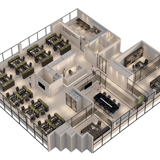"The reason for conducting this study was the observation that between 2016 and 2022, the increase in residential real estate prices was 14% higher than what could be explained by the fundamental macroeconomic factors of the Greek economy," according to Mr. Ilias Lekkos, Head of Financial Analysis and Investment Strategy of Piraeus Bank.
![Pages from Greek Residential Real Estate_Jan24[4].jpg](/media/blog/Pages from Greek Residential Real Estate_Jan24[4].jpg)
""The investigation into the reasons behind this notable gap in the Greek real estate market has led to the conclusion that the economic turmoil and recession in the country have resulted in a significant disparity between the supply and demand of residential properties. This imbalance is unfortunate and is likely to be challenging to rectify in the near future," Mr, Lekkos commented.
![Pages from Greek Residential Real Estate_Jan24[4]-2.jpg](/media/blog/Pages from Greek Residential Real Estate_Jan24[4]-2.jpg)
Building activity
According to the study, construction activity reached a peak in 2005 with the issuance of 66 thousand building permits, which corresponded to 195 thousand residences. Since then the decline has been constant, leading to historically low levels of construction activity in 2012 and thereafter, with annual issuance of permits corresponding to 16 thousand residences per year. Consequently, between the 2001-2011 census an increase in the number of dwellings by 917 thousand is recorded, while in the next decade 2012-2022 we estimate that only 155 thousand were added.![Pages from Greek Residential Real Estate_Jan24[4]-3.jpg](/media/blog/Pages from Greek Residential Real Estate_Jan24[4]-3.jpg)
Between 2001 and 2011, the number of households increased by 582,000, but from 2012 to 2022, only 197,000 new households are expected. Additionally, there has been a recent rise in demand for short-term rental housing, which adds to the demand for domestic housing and currently totals 170,000 dwellings.
![Pages from Greek Residential Real Estate_Jan24[4]-4.jpg](/media/blog/Pages from Greek Residential Real Estate_Jan24[4]-4.jpg)
Ζήτηση για 212 χιλιάδες κατοικίες
To summarize, the study unveiled a shortage of 212,000 homes has led to a cumulative 14% increase in home prices, beyond what can be justified by income growth. This shortage is a result of there being 155,000 new homes built in the last 10 years, while the demand for new homes is 367,000 (197,000 new households plus 170,000 short-term leases).
While house price growth rates are expected to slow down due to the supply-demand gap, they are not expected to turn negative. The study unveils that the real estate market is currently at a point where potential buyers are still willing to pay high prices, but there are signs of fatigue, indicating that we may soon enter the next phase of the cycle where higher prices are accompanied by a fall in sales.















